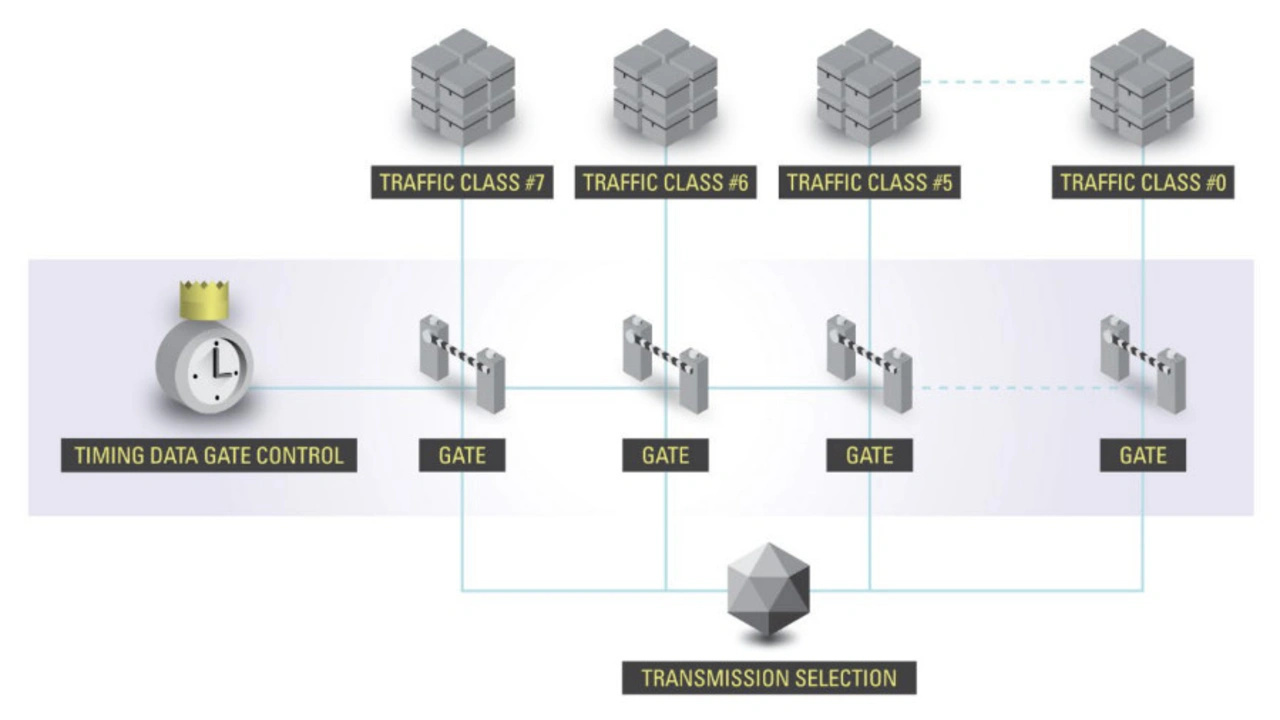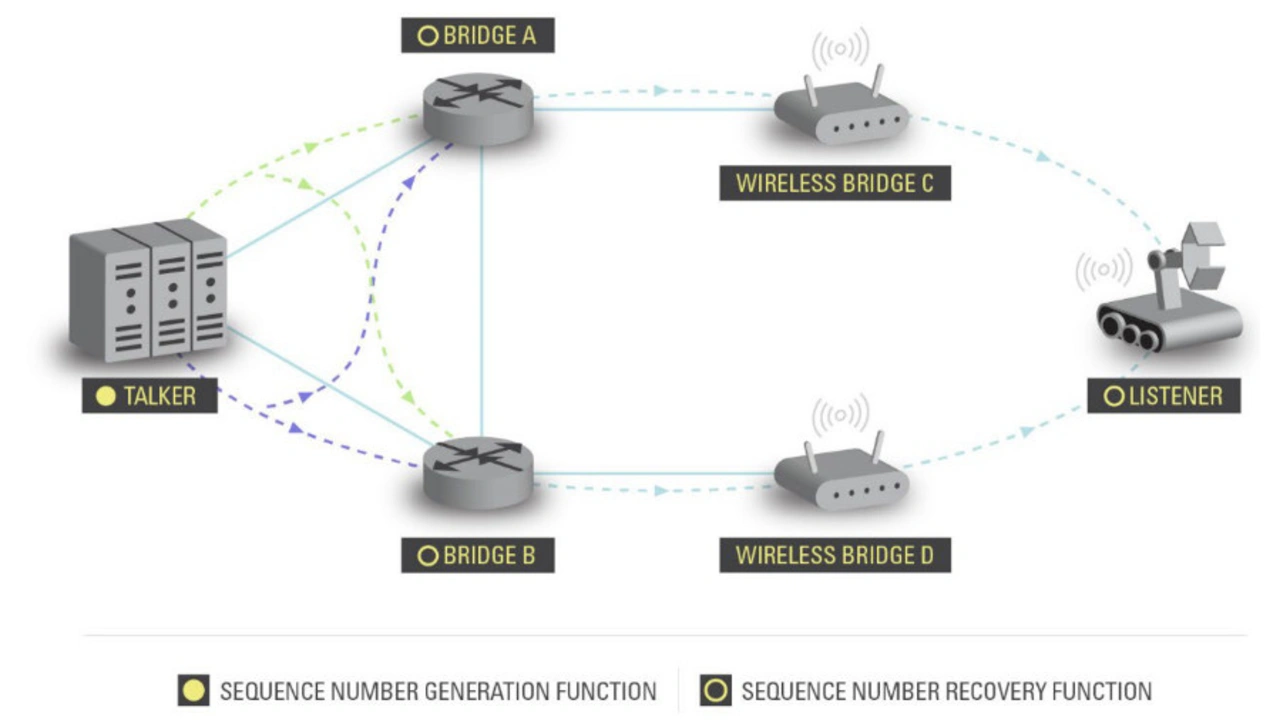Time-Sensitive Networking
Market Expectations, Capabilities & Certification
Fortsetzung des Artikels von Teil 1
Wireless TSN Capabilities
This section describes the assumptions and deployment scenarios for wireless technologies, as well as functional requirements in terms of TSN capabilities (based on relevant 802.1 TSN standards) for wireless systems.
Assumptions and Deployment Expectations
Deployment scenarios for WTSN include standalone Local Area Networks (LANs) and Enterprise networks with wired and wireless access. TSN capabilities are expected to be supported in managed networks where all devices are assumed to be TSN capable or meet TSN requirements. A TSN-capable network may be a subset of a broader enterprise network. Parts of the broader network may not be TSN capable, but TSN-capable segments must be protected from non-TSN devices.
Wireless networks that support TSN capabilities are carefully planned networks. Coverage requirements and traffic types must be known at the planning stage. Network/Traffic engineering is performed at this stage to properly select and configure TSN capabilities (e.g., time aware scheduling).
It is expected that access to TSN-capable wireless networks will be managed by a central authority that can ensure access policies are enforced. Only authorized devices shall be able to access a TSN-capable wireless network. Not all authorized devices may require time-critical performance, but they all must implement and comply with the TSN capabilities required to provide time synchronization and determinism benefits for time-critical applications.
Wireless TSN Features
The IEEE 802.1 TSN task group has developed a wide range of tools and corresponding specifications. Not all TSN specifications are required or relevant to wireless, but a several TSN features, summarized in Table 2, have been extended to wireless and are driving the developments to enable Wireless TSN in both Wi-Fi and 5G.
|
Feature |
Latest approved IEEE Std. |
Capability |
|---|---|---|
| 802.1AS Time Synchronization | IEEE Std. 802.1AS-2020 – Timing and Synchronization for Time- Sensitive Applications | Time distribution, including media specific support for Ethernet (802.3) and Wi-Fi (802.11) |
| Traffic scheduling and shaping 802.1Qbv/Qav |
IEEE Std. 802.1Q-2018 – Bridges and Bridged Networks |
Bounded latency through traffic shaping |
| 802.1CB Frame Replication and Elimination for Reliability | IEEE Std. 802.1CB-2017 – Frame Replication and Elimination for Reliability | High reliability and resilience to device and link failures |
| 802.1Qcc TSN Configuration & Management |
IEEE Std. 802.1Qcc-2018 – Amendment 31: Stream Reservation Protocol (SRP) Enhancements and Performance Improvements |
TSN configuration and management models and parameters |
Table 2. Wireless TSN (priority) features. (Quelle: Avnu Alliance)
Time synchronization, as defined by the IEEE 802.1AS protocol, is a fundamental mandatory requirement across wired and wireless TSN. In addition to application-specific usages, time synchronization is also used to enable TSN features, such as 802.1Qbv time-aware scheduling. Accuracy on the order of 1μsec is a feasible goal over wireless systems, including 5G and Wi-Fi, and it should be expected to cover many wireless use cases.
Traffic shaping is another high priority feature for wireless systems, and requirements are provided by the 802.1Qbv (Time-aware shaper) or 802.1Qav (credit-based shaper) standards. The choice of traffic shaper is use case-dependent. The 802.1Qbv standard defines a set of timed gates to control the queues associated with multiple traffic classes on an TSN bridge, as shown in Figure1.

To support 802.1Qbv, it is expected that the wireless TSN system can identify, prioritize, and deliver time-critical data within time windows that are defined according to a schedule for the network. 802.1Qbv has been a clear requirement from industrial use cases, but the predictable data delivery performance obtained with 802.1Qbv can also benefit most of the priority use cases in Table 1. 802.1Qav was originally proposed for and is expected to be used in ProAV applications. Integration of credit-based (for legacy/wired segments) with time-aware shaping might be an option to consider for hybrid ProAV deployments. Wireless TSN solutions may use 802.1Qbv to deliver ProAV content over the air while wired-wireless bridging devices map AVB capabilities, such as 802.1Qav in the wired links to 802.1Qbv in the wireless links.
TSN redundancy, as specified in the IEEE 802.1CB Frame Replication and Elimination for Reliability (FRER) standard was defined to enhance reliability by using data replication on multiple streams and paths. In some time- and safety-critical applications, it is unacceptable to recover from device and link failures. 802.1CB provides redundancy to applications, reducing the impact of individual
device/link failures. The 802.1CB FRER service is transparent to the underlying MAC/PHY link, and it should be able to operate over wireless links, as shown in Figure 2, but implementation may vary depending on the specific wireless technology. 802.1CB is expected to be used when the application requires extremely high levels of reliability and needs redundancy to both device and link failures.

The 802.1Qcc specification defines TSN configuration and management models and parameters. We expect that wired and wireless TSN systems will follow configuration and management requirements defined in 802.1Qcc. Different TSN configuration models are possible. A centralized model was used as the baseline assumption in most wireless TSN developments. For instance, the 5G integration with TSN defined in 3GPP Rel. 16 only assumes a centralized configuration model. The next section will discuss further considerations when applying/adapting the current TSN configuration models for wireless TSN.
The short list in Table 2 represents the features that are the focus of attention so far, but as standards evolve, more TSN and wireless features may become available. As with wired TSN, the WTSN toolbox is expected to grow over time.
- Market Expectations, Capabilities & Certification
- Wireless TSN Capabilities
- Network Management Considerations





